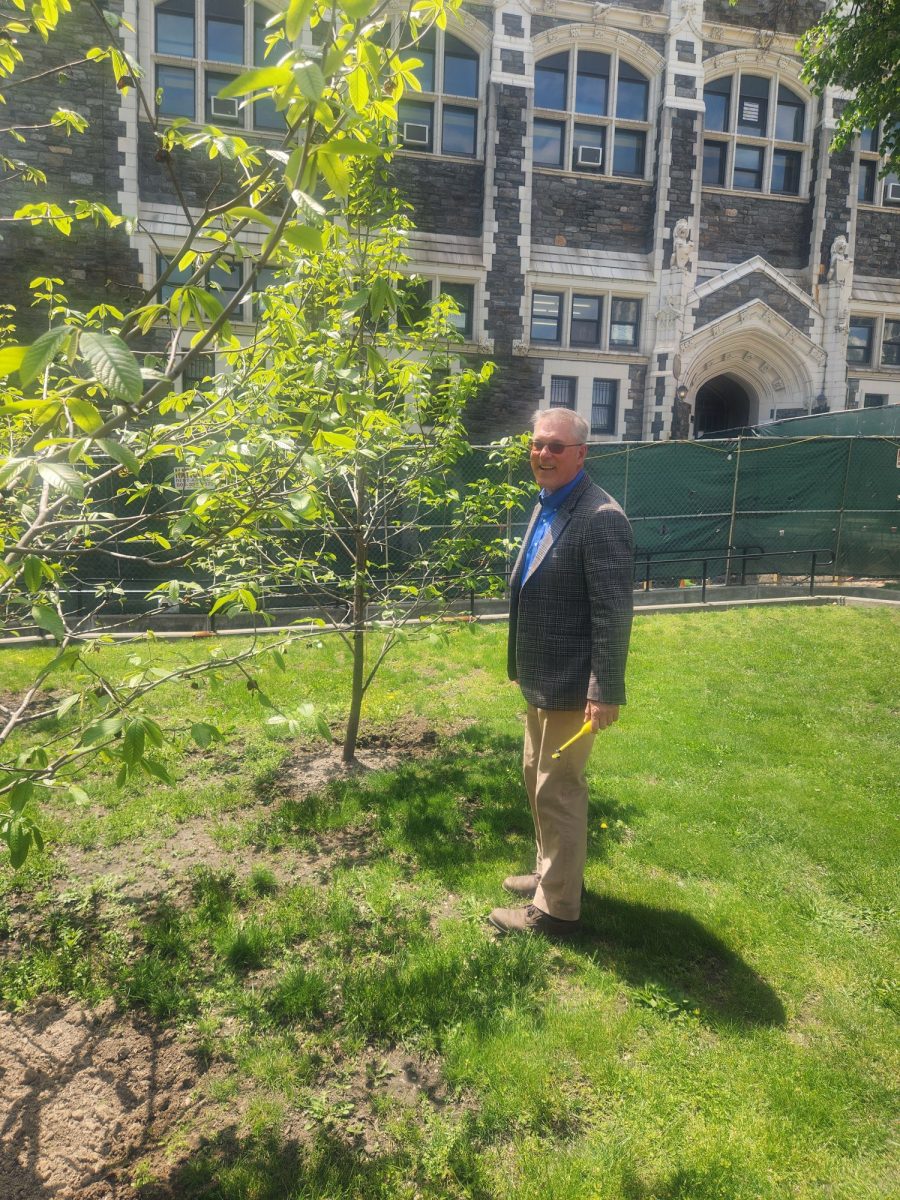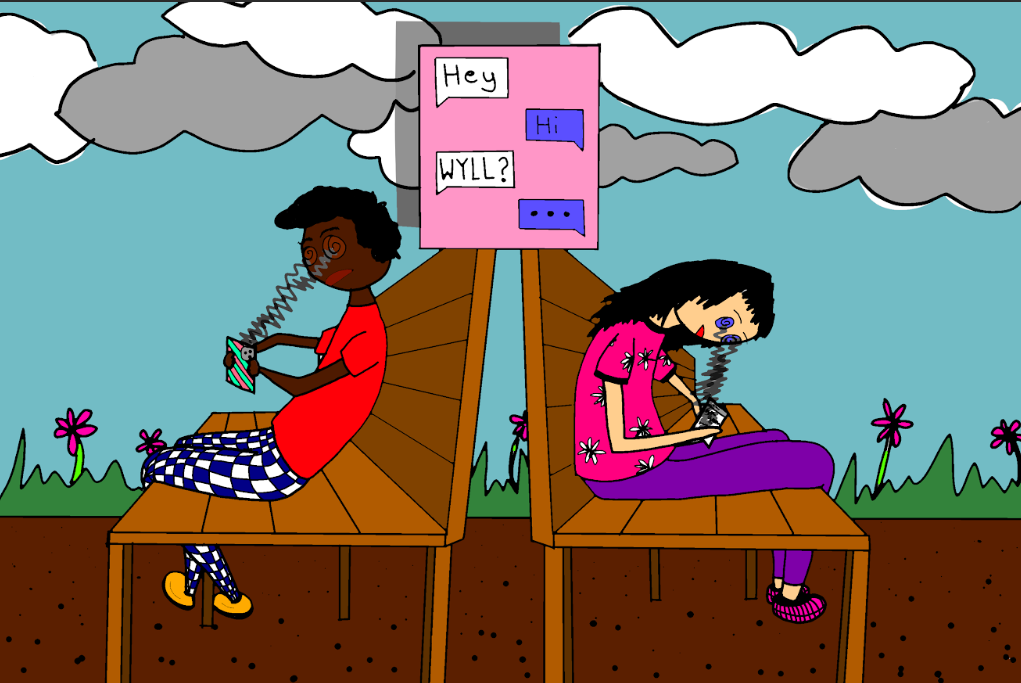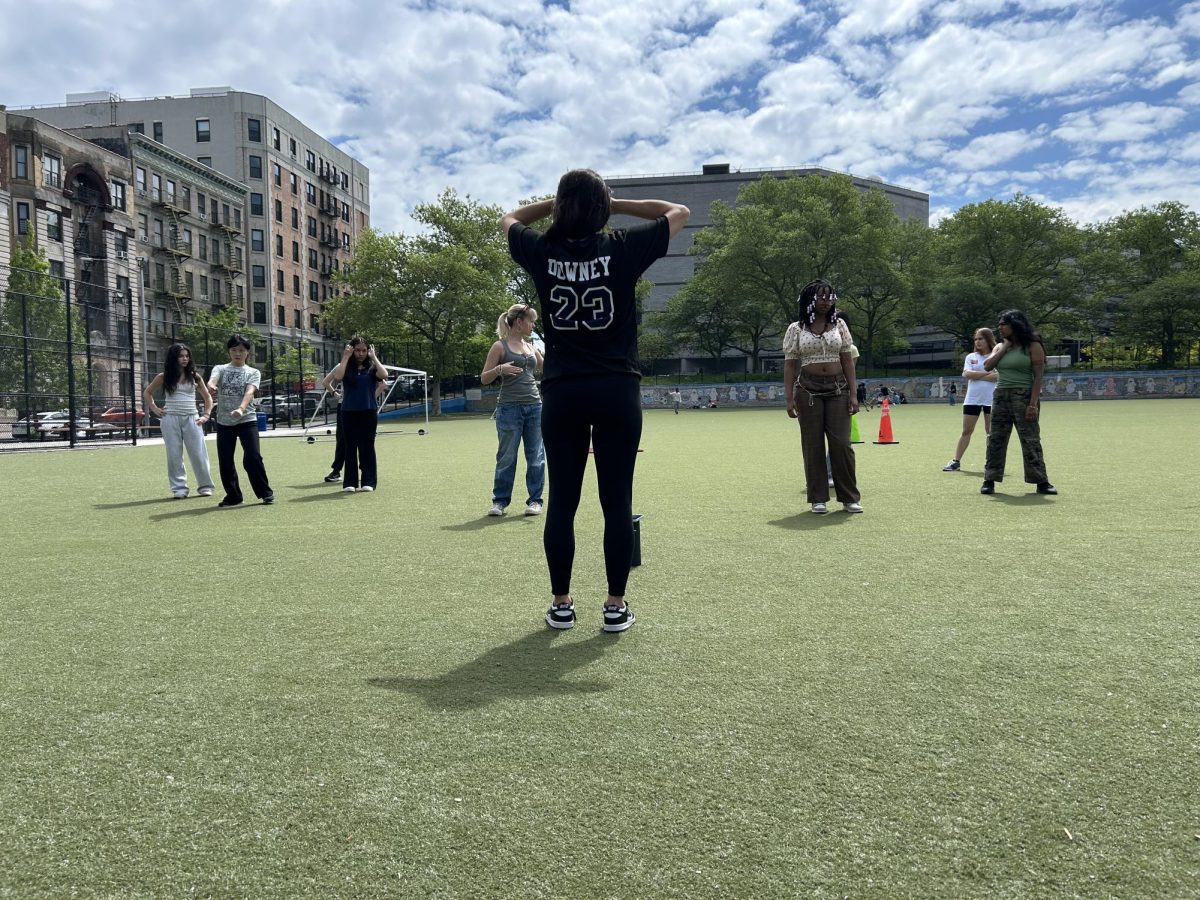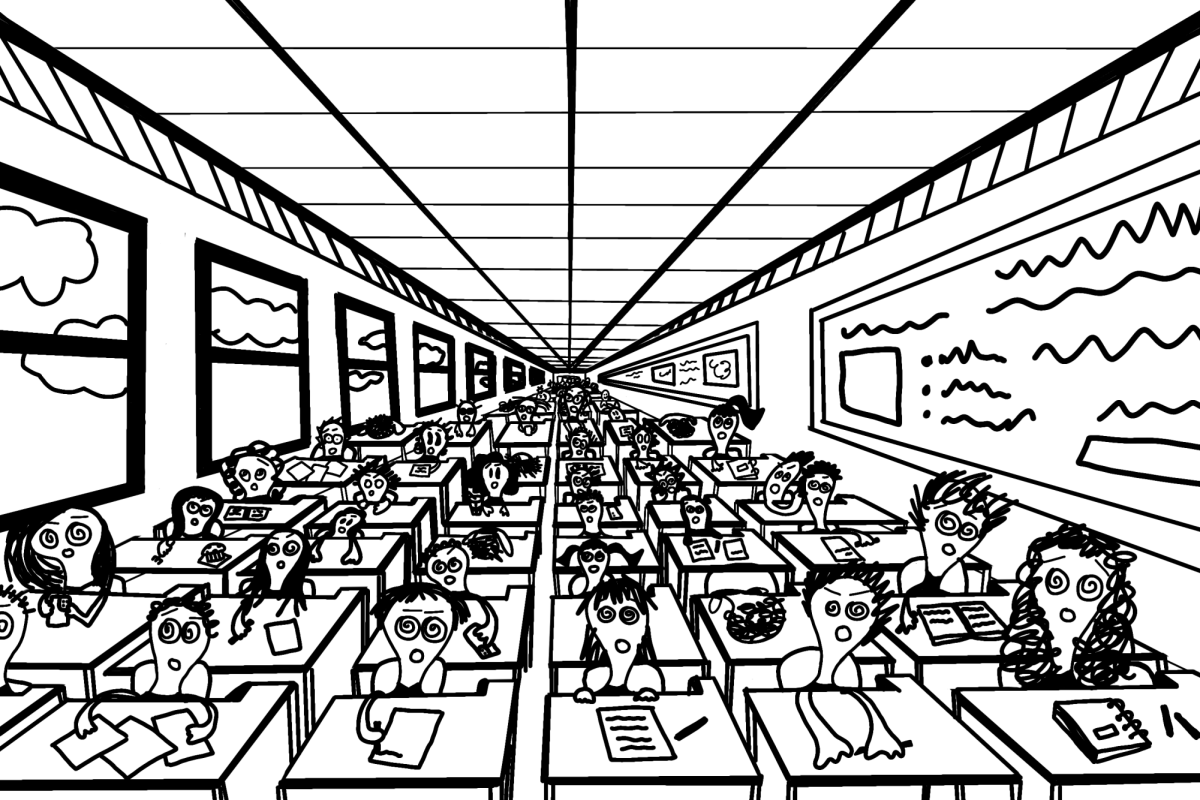There is no struggle like sitting in the back row of room 106, eyes straining to make sense of the dried-out marker chicken scratch on the whiteboard up front. With your notes severely lacking (because 20/20 vision isn’t enough to read the work on the board), you raise your hand for help. But there are 67 students in the room, so that frantically waving arm goes unnoticed.
This is the problem with our class sizes.
Okay, maybe this is a bit dramatic. After all, there are only two lecture-sized classes this year at HSMSE. However, while there is no “ideal” class size, most teachers agree that smaller is better. “Yes, of course I want smaller class sizes,” said Ms. Walker, who explained that in her junior class with 16 students, “there’s more time for everything. The discussion is just much more relaxed, and I think kids are less stressed because they are sharing in front of a smaller group.” Ms. Englehardt thinks that her two smaller classes of 18 and 21 students are “really great,” because she has “become very close to the students.” When asked if she would benefit from smaller class sizes, Ms. Hesseltine responded that “especially with teaching writing, a smaller class size would help me give a lot more individualized feedback to students. I do my best to manage the current class sizes by utilizing office hours, but I think in a literature classroom where we’re talking about ideas, smaller is beneficial for everyone.”
Typically, smaller class sizes are most beneficial to elementary school students, as they require much more attention. However, it is still important for high schoolers to avoid the aforementioned treacherous frantic arm-waving scenario. Smaller classes lead to increased student achievement, heightened engagement in the lesson, and better student-teacher relationships.
So why do we have these huge 70-student classes? Principal Dolcy explained that a few years ago the decision was made to use room 106 for large, lecture-style courses with juniors or seniors “so that students would experience a college lecture-style [class with] a larger size, prior to going to college where a few classes could be as large as 100–300 person lectures.”
The current limit for high school class sizes in New York City public schools is 34 students. Each grade at HSMSE is made up of smaller groups called cohorts, which can include up to 34 students. Ms. Bennett, our school secretary, explained that “as a practice to follow building size limitations, HSMSE limits grade cohorts to a 5 cohort, 4 cohort cycle.” This year, seniors and sophomores have 5 cohorts, and juniors and freshmen have 4 cohorts. That means that the senior and sophomore grades have a maximum of 170 students each, though they are currently sitting at 153. The junior and freshman grades have a maximum of 136 students, yet currently contain 129 students. The number of students in a grade does not change greatly due to transfers. This school year, there were three students who left HSMSE, and two students who transferred in. “It’s very rare that we get a transfer in,” said Ms. Bennett.
Our current cohort system seems pretty solid, but it might not be safe for long. On September 8, 2022, Gov. Kathy Hochul signed a bill into law that will reduce class sizes over five years, with one year for planning. By September 2028, all New York City public schools must comply with the regulation that the number of students in a class (with exceptions for P.E. and electives) must be 25 students or less. This is 9 students lower than the current maximum.
How will HSMSE comply with this bill? Will our cohorts decrease in size? Will we have enough staff? Mr. Dolcy claimed that “regarding the state and city positions with class size, we are in communication with different school offices to identify solutions” in order to ensure that “students continue to receive access to the school classes and programs [while] the school size [remains] within its current capacity.” However, HSMSE is “not seeking solutions that largely reduce cohort sizes.”
At the end of the day, although we might not have the capacity for each class to be small, “student performance has not declined,” to Mr. Dolcy’s knowledge, in any of the courses with large class sizes. “However, the instructors [of large classes] have remained myself, Mr. Liu and Mr. Scheiman over the years,” he explained—it takes a practiced teacher to handle such a feat. As long as students continue to receive the support they need to obtain a great education, and make the decision not to sit in the back row of room 106, our class sizes are not disruptive to our learning.





















